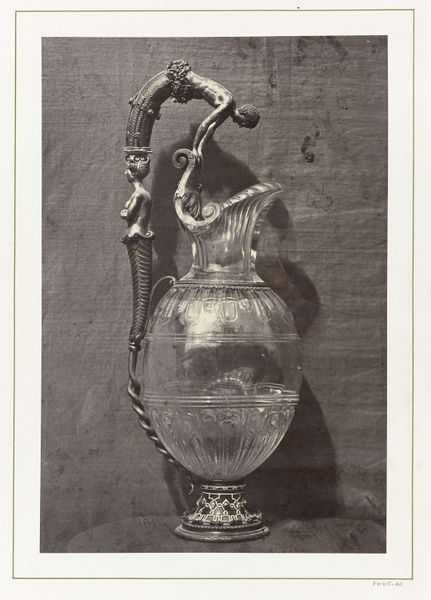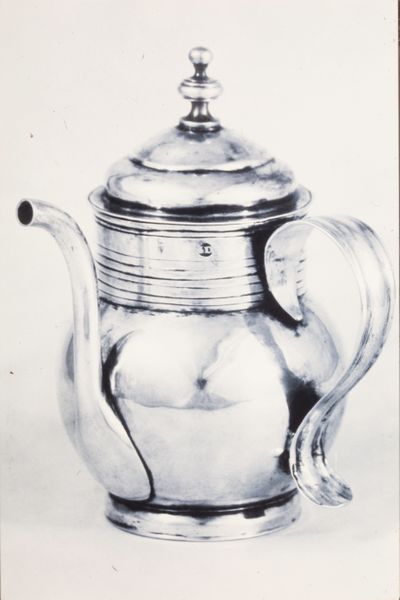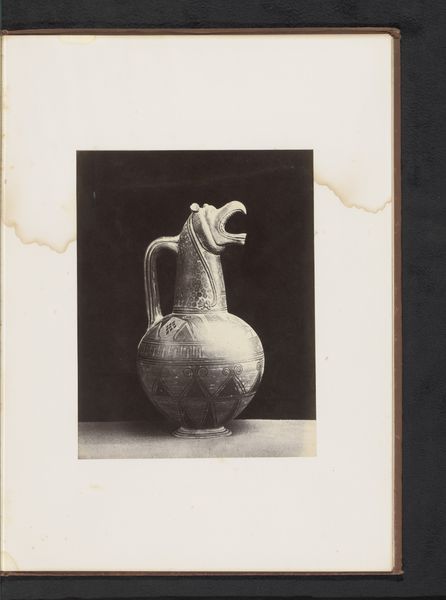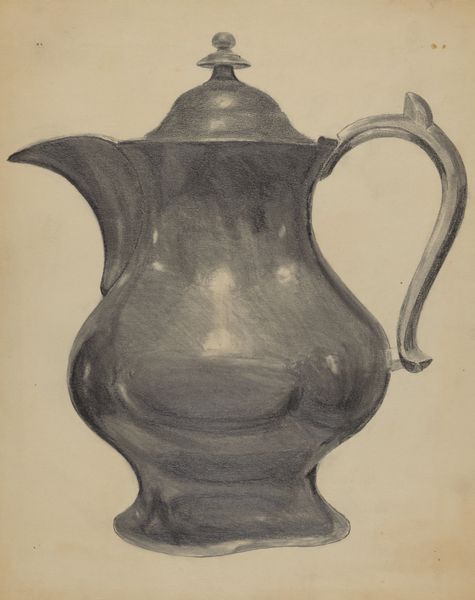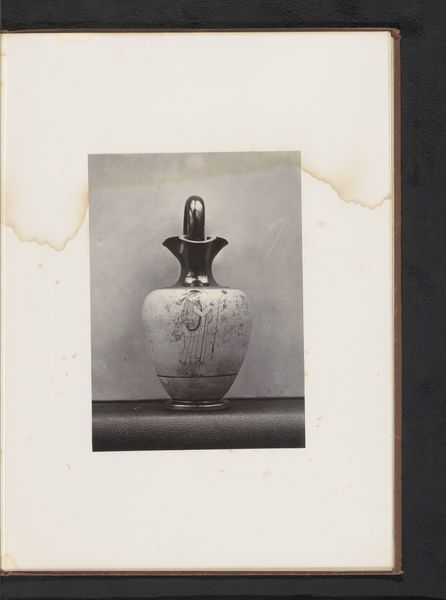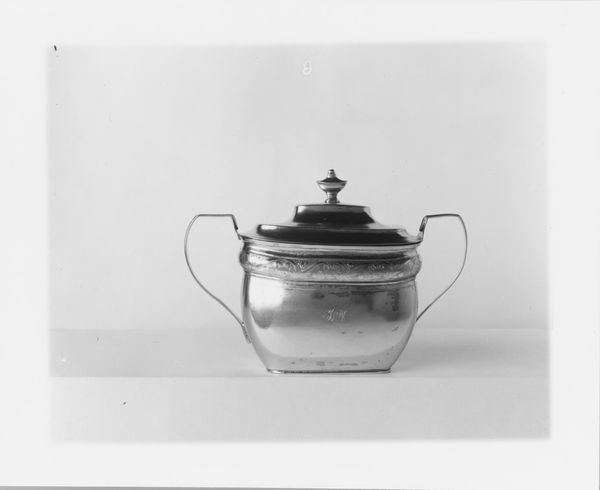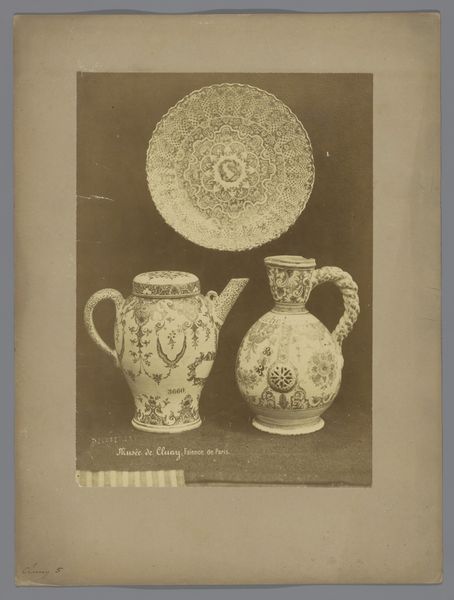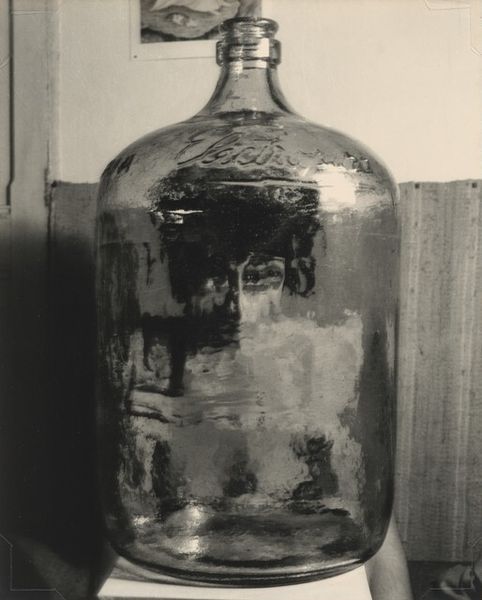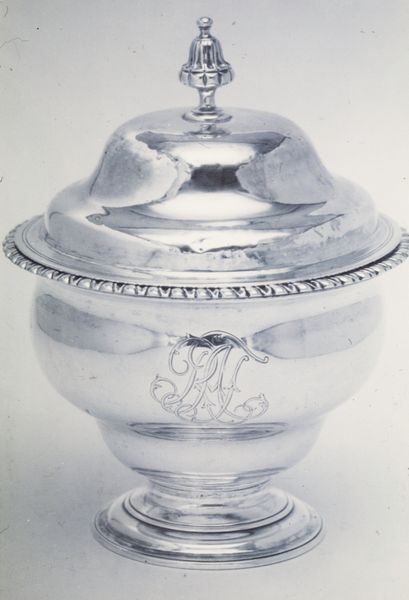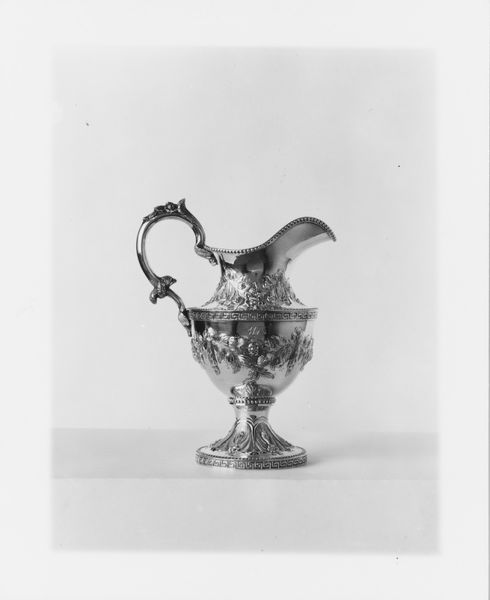
Stilleven met Engelse roomkan, Westerwaldkruik en een flesje Acide Acétique c. 1852
0:00
0:00
eduardisaacasser
Rijksmuseum
daguerreotype, photography
#
portrait
#
still-life-photography
#
sculpture
#
daguerreotype
#
photography
#
realism
Dimensions: height 113 mm, width 81 mm
Copyright: Rijks Museum: Open Domain
Editor: Here we have Eduard Isaac Asser's "Still Life with English Cream Jug, Westerwald Jug and a Bottle of Acetic Acid," a daguerreotype from around 1852. The textures of the ceramic and glass are so interesting to me in this early photograph. What do you see in the piece? Curator: I am drawn to the social context inherent in the objects selected. Consider the "English Cream Jug" – an imported luxury, juxtaposed with the more rustic Westerwald jug, likely a locally produced item. The bottle of acetic acid, perhaps used in the photographic process itself, anchors the piece in a specific mode of production. The work compels me to think about the rise of photography and how these manufactured items gained cultural value through that new visual language. What does it mean to capture these vessels and grant them new agency, when at the same time the Industrial Revolution is churning them out? Editor: That’s fascinating! I hadn’t considered the class implications of the objects themselves, or the fact that one ingredient is part of making the piece! It makes me think about the labor behind not just the photo, but everything depicted within. Does the choice of these items democratize what becomes worthy of art? Curator: Exactly. The daguerreotype flattens those hierarchies, presenting utilitarian objects with the same level of detail as the cream jug. I am intrigued to think about how the industrial modes of creating the vessels and the scientific innovation required for early photography mutually transformed art making itself. The image acts as an artifact of that cultural shift. What is striking to you now after having had that view? Editor: I now see a reflection on industry and manufacturing practices - capturing real-world commodity, displayed within new technologies. Thank you for sharing your insight into its materiality!
Comments
No comments
Be the first to comment and join the conversation on the ultimate creative platform.
